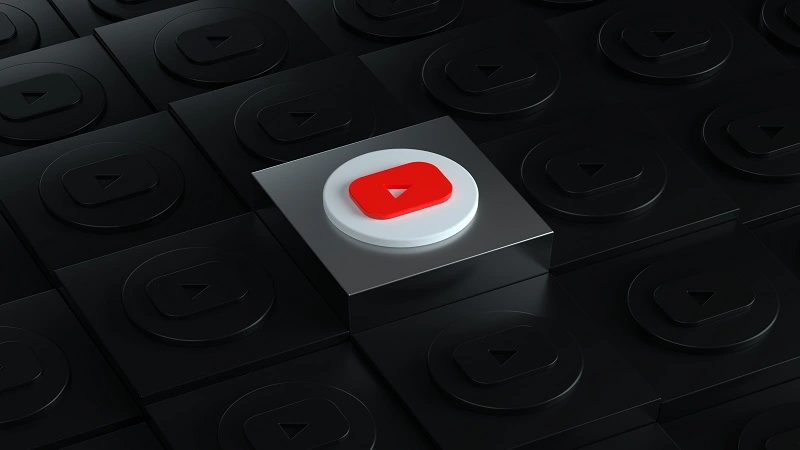In today’s digital age, if there’s one platform that has redefined how we consume content, build careers, and engage with communities, it’s YouTube. What started as a simple video-sharing site in 2005 is now a global powerhouse with over 2.7 billion monthly active users. Whether you’re watching makeup tutorials, educational videos, music, gaming streams, or daily vlogs, in has become an integral part of our daily lives.
In this article, we’ll dive deep into in rise, its influence on digital culture, monetization models in Shorts, and its future potential—all optimized with helpful, ranking-capable insights.
The Birth and Rise of YouTube
The trio envisioned a platform where users could upload and share videos with the world.
Fast forward to today, in is the second most visited website in the world, just after Google itself.
Why YouTube Dominates the Internet
1. Universal Accessibility
YouTube is available in over 100 countries and supports more than 80 languages, making it one of the most inclusive platforms globally. It allows content creators from any corner of the world to reach a global audience without needing a broadcasting license, studio setup, or corporate backing.
2. Mobile-First Design
With over 70% of views coming from mobile devices, in has adapted brilliantly to the smartphone generation. Its app is lightweight, user-friendly, and built for on-the-go consumption, contributing massively to its popularity.
3. Massive Content Variety
No matter your interest—be it science, comedy, DIY crafts, or video essays—in has something for you. This content diversity is a huge reason people spend an average of 30 minutes per session on the platform.
YouTube and the Creator Economy
Turning Passion into Paychecks
YouTube has been the launchpad for millions of creators who’ve turned their hobbies into full-time careers. The in Partner Program (YPP) allows creators to earn revenue through:
AdSense (ads before, during, and after videos)
Channel memberships
Super Chat & Super Stickers
Merchandise shelf
YouTube Premium revenue
Top YouTubers like MrBeast, PewDiePie, and Emma Chamberlain have built empires purely on their content.
Creator Support Tools
YouTube continues to introduce features that empower creators, including:
YouTube Studio for analytics and content management
Monetization guidance
Copyright tool
Community tab to build deeper connections with subscribers
The Rise of YouTube Shorts
Launched in 2021 to compete with TikTok, in Shorts is now one of the most powerful tools for rapid content growth. These vertical, 60-second videos are perfect for creators to go viral and reach new audiences quickly.
As of 2024, in Shorts receives over 70 billion daily views, and creators are now able to monetize Shorts via the YPP if they meet eligibility requirements.
Why Shorts Matter for SEO and Engagement
Increased reach: Great for channels trying to gain subscribers quickly.
Discoverability: Integrated into in main feed and search results.
Retention: Helps maintain regular audience engagement between long-form uploads.
YouTube SEO: How to Rank #1
Here are proven strategies to improve your YouTube SEO:
1. Keyword-Rich Titles and Descriptions
Use your target keyword (like “YouTube” in this case) naturally in the title, description, and tags. For instance:
Title: “YouTube in 2025: What Every Creator Must Know”
Description: “This video covers in latest features, monetization strategies, and SEO tips to help you succeed on YouTube in 2025.”
2. High Retention and Watch Time
YouTube values content that keeps viewers watching. Structure your videos to retain attention—use hooks, transitions, and cliffhangers.
3. Thumbnails that Convert
Your thumbnail is your first impression. Make it high-quality, clickable, and relevant. Use clear text and strong contrast.
4. Engagement Signals
Encourage viewers to like, comment, and subscribe. YouTube prioritizes content that fosters community interaction.
5. Closed Captions and Subtitles
These not only improve accessibility but also boost SEO by helping inunderstand your content contextually.
YouTube for Businesses and Brands
Brands use YouTube for:
Video Ads (YouTube Ads) through Google Ads
Product reviews and unboxings
How-to guides
Brand storytelling
Over 70% of viewers say they bought a product after seeing it on YouTube. For local businesses, it can drive both online and offline conversions.
Challenges and Criticism
Like any platform, YouTube isn’t without its controversies:
Algorithmic bias and content suppression
Demonetization of sensitive topics
Copyright strikes affecting fair-use content
Content moderation struggles
However, in has responded with new policies, better appeal systems, and clearer monetization rules.
The Future of YouTube
As we look ahead, in is set to integrate more AI features, better monetization tools for Shorts, and enhanced community features. It’s also investing in YouTube TV, gaming, and even podcasts, aiming to dominate every format of digital content.
One anticipated feature in 2025 is “Watch With”—a social viewing experience allowing users to watch videos together remotely.
Final Thoughts
From shaping the creator economy to becoming the world’s go-to educational resource, YouTube’s influence is unparalleled. Whether you’re a casual viewer, aspiring creator, or digital marketer, understanding how in works—and how to make it work for you—is essential.
See More: digitalnewswire.net
